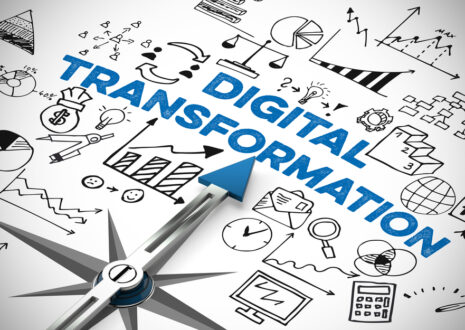The e-commerce market is still on a strong development momentum and innovating. The future is inherently difficult to predict, but thanks to a number of signs, people can somewhat get an idea of what e-commerce will look like in the future.
With digital transformation, almost all non-digital products, services or operations are digitized to increase efficiency and productivity and improve customer experience. Therefore businesses that adopt digital transformation maintain their relevance in the digital age and accelerate their growth.
Here are 6 trends shaping the future of e-commerce to prepare your business for:
Omnichannel shopping
Omnichannel retail is a strategy in which retailers engage customers through multiple digital and physical touchpoints. Today, the majority of consumers research brands online before they set foot in a physical store to purchase a product. Since the customer journey now has a multitude of touchpoints across different devices, businesses need to fully integrate channels to provide a comprehensive, easy, and consistent shopping experience
When implemented correctly, the omni-channel strategy is the driving force behind sustainable revenue growth. In fact, according to Google research, an omnichannel strategy can help businesses generate about 80% of store visits.
Creating a better experience for customers across all channels, in turn, fosters greater satisfaction and loyalty. By analyzing the customer journey, retailers can improve their strategies around marketing, merchandising, loyalty programs, and inventory management, and they can dedicate resources where they will matter most to meet their customers’ fast-changing expectations.
Artificial intelligence and virtual reality
Artificial intelligence (AI), virtual reality (VR) and augmented reality (AR) are changing the customer’s online shopping journey with tools like AI-powered chatbots; virtual showroom, virtual desk, virtual assistant; AI-powered personalized shopping; AR applications help to recreate the real world on social media platforms.
In particular, the above tools provide an easier, more enjoyable shopping experience for consumers. When combined, AI, VR, and AR technologies and product refinement features help customers choose products that are easier and more appropriate.
The Holy Grail for marketers and eCommerce companies is attracting customers to their store. Whether in a physical or online sense, using both VR and AR technologies shows strong promise in helping to achieve this goal. These new devices allow shoppers to immerse themselves deeper into the commerce experience and they give customers a new attraction to visit both online and physical stores.
Visualization – Virtual Reality Commerce (v-commerce)
In the information age, brands are constantly competing with each other for the attention of consumers. On that basis, visual communication becomes more important than ever.
Businesses are using visual tactics like 360-degree photography, interactive 360 video, and VR experiences to attract more customers. Just like an omnichannel strategy, visual commerce can help a company increase revenue. According to Shopify research, if customers have viewed a product in a virtual reality environment, there is a high (65%) chance they will decide to buy that product later.
Dynamic pricing based on consumer data
Dynamic pricing is the act of businesses adjusting prices to reflect actual consumer demand. While this is not a new phenomenon, AI and new technology have made price adjustment and equalization more precise and accessible.
Of course, the basis for any change still has to be on consumer behavioral data. Companies like Amazon have deployed technology that helps the company optimize its pricing strategy. Other businesses can completely look to Amazon to apply a technology model to significantly increase revenue.
As much as 60% of shoppers choose retailers with optimal prices. Artificial intelligence (AI) can help you optimize prices at any given moment to satisfy your customers and keep your profit margins. This, in turn, lets your pricing managers switch to strategic tasks, allowing you to get incremental profit. In fact, IBM learned that as many as 73% of respondents (retailers) are planning to use intelligent automation to enhance their pricing and promotion by 2021.
New payment methods
Overall, the aim of technological innovation is to make the customer’s online shopping experience as seamless as possible, and checkout is an important part of that innovation process. It is important for businesses to provide customers with as many payment options and to be as minimalistic as possible to reduce cart abandonment. According to a recent Shopify report, the mobile cart abandonment rate is up to 86%, 55% of which is related to payment procedures and order fulfillment costs.
Currently, there are several payment options such as digital wallet, mobile payment, and cryptocurrency. As companies around the world become more open to blockchain technology and use cryptocurrencies as payment methods, cryptocurrencies are more popular than ever.
NFTs, or non-fungible tokens, have seemed to change the ownership pattern of digital assets. NFTs are currently one of the most popular use cases in e-commerce. They typically allow businesses to offer monetizing loyalty programs. For every purchase made, these programs reward customers with points. The points further can be redeemed for products, discounts or even bigger bonuses. Thus, instead of random points, companies can now issue NFT-based tokens with a predetermined value.
Web 3 and Metaverse
For many people, the focus on web3 has become clearer as the metaverse appeared and was widely promoted. Although the two concepts above are closely linked, so far they are not interchangeable.
Web3 plays an important role in realizing the metaverse, especially in the context of web3 using blockchain technology as a platform and cryptocurrency as a means of payment. In general, web3 allows the virtual world to exist in an online environment and be accessible through a web browser.
Technology development is an essential need and has certain impacts on the development of e-commerce. It is expected that consumer expectations will continue to shape the sales methods of brands and businesses. In summary, the application of v-commerce (virtual reality commerce) to the online sales model promises to upgrade the consumer experience.
Future-proof your ecommerce business with digital transformation
Brands are using old platforms along with innovative tools to create the connections shoppers want across channels. But it’s not just about doing the same thing that’s been done for the last 10 years. It’s about listening to customers’ expectations and needs and making their experience as seamless as possible.
Keeping up with trends and news regarding digital transformation is crucial to the success of brands and businesses. Not sure where to start? Advesa has a team of digital marketing specialists that are dedicated to coming up with and executing creative social media strategies that work for you in the long run.
Connect with us today so we can transform your business vision into reality.




